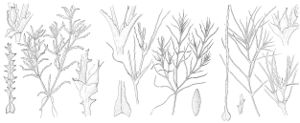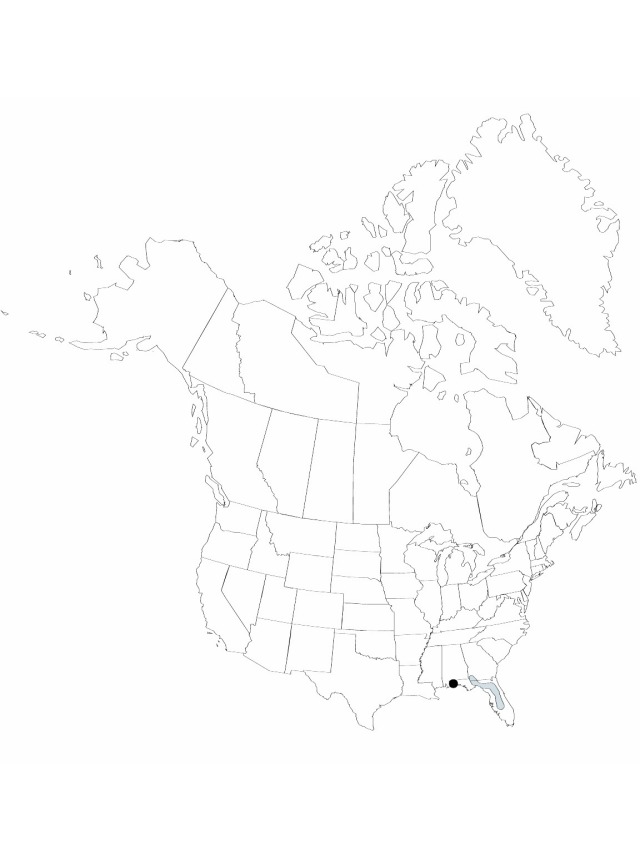Najas filifolia
Brittonia 37: 392. 1985.
Stems profusely branched distally to proximally, 7–22 cm × 0.2–1 mm; internodes 0.2–4 cm, without prickles. Leaves usually recurved with age, 0.8–2.6 cm, lax stiff in age; sheath 1–1.3 mm wide, apex round to slightly auriculate; blade 0.1–0.7 mm wide, margins conspicuously serrulate, teeth 5–9 per side, apex acute, with 1 tooth, teeth multicellular; midvein without prickles abaxially. Flowers 1 per axil, staminate and pistillate on same plants. Staminate flowers in distal axils, 2–3 mm; involucral beaks 4-lobed, 0.4–0.6 mm; anthers 4-loculed, 1.5–2 mm. Pistillate flowers in proximal axils, to 2.5 mm; styles less than 0.4 mm; stigmas 4-lobed. Seeds strongly recurved, greenish brown, fusiform, 2.5–3 × 0.5–0.7 mm, apex with style situated at centeral; testa dull, 3 cell-layers thick, pitted; aeroleareoles regularly arranged in ca. 20 longitudinal rows, not ladderlike, 4-angled, longer than broad, end walls raised. Chromosome number unknown not available.
Phenology: Flowering late summer.
Habitat: Sandy- bottomed lakes
Elevation: 0–100 m
Discussion
Najas filifolia is known from four localities: Open Pond and Cane Water Pond in Decatur County, Georgia; Milton in Santa Rosa County, Florida; and Lake Jackson in Leon County, Florida.
The vegetative organs of Najas filifolia resemble those of N. minor and N. wrightiana by the presence of large teeth scattered along the margin of quite narrow leaves. Najas filifolia is easily distinguished from the latter two species, however, by its recurved fruits (sometimes crescent-shaped). I know of no other Najas with such curved fruits.
The name Najas conferta A. Braun has been misapplied to this taxon.
Of conservation concern.
Selected References
None.
Lower Taxa
"elongating" is not a number.

